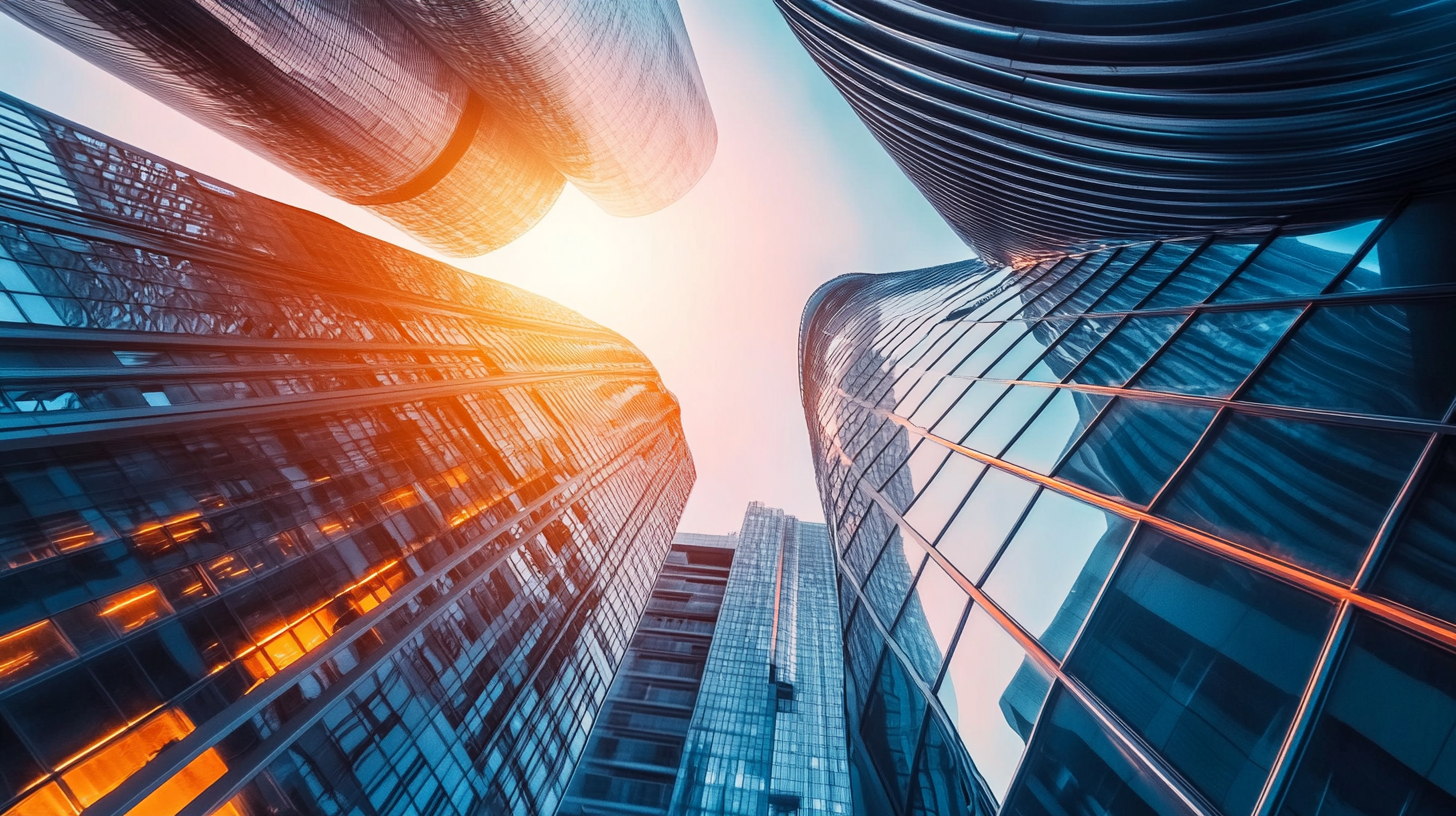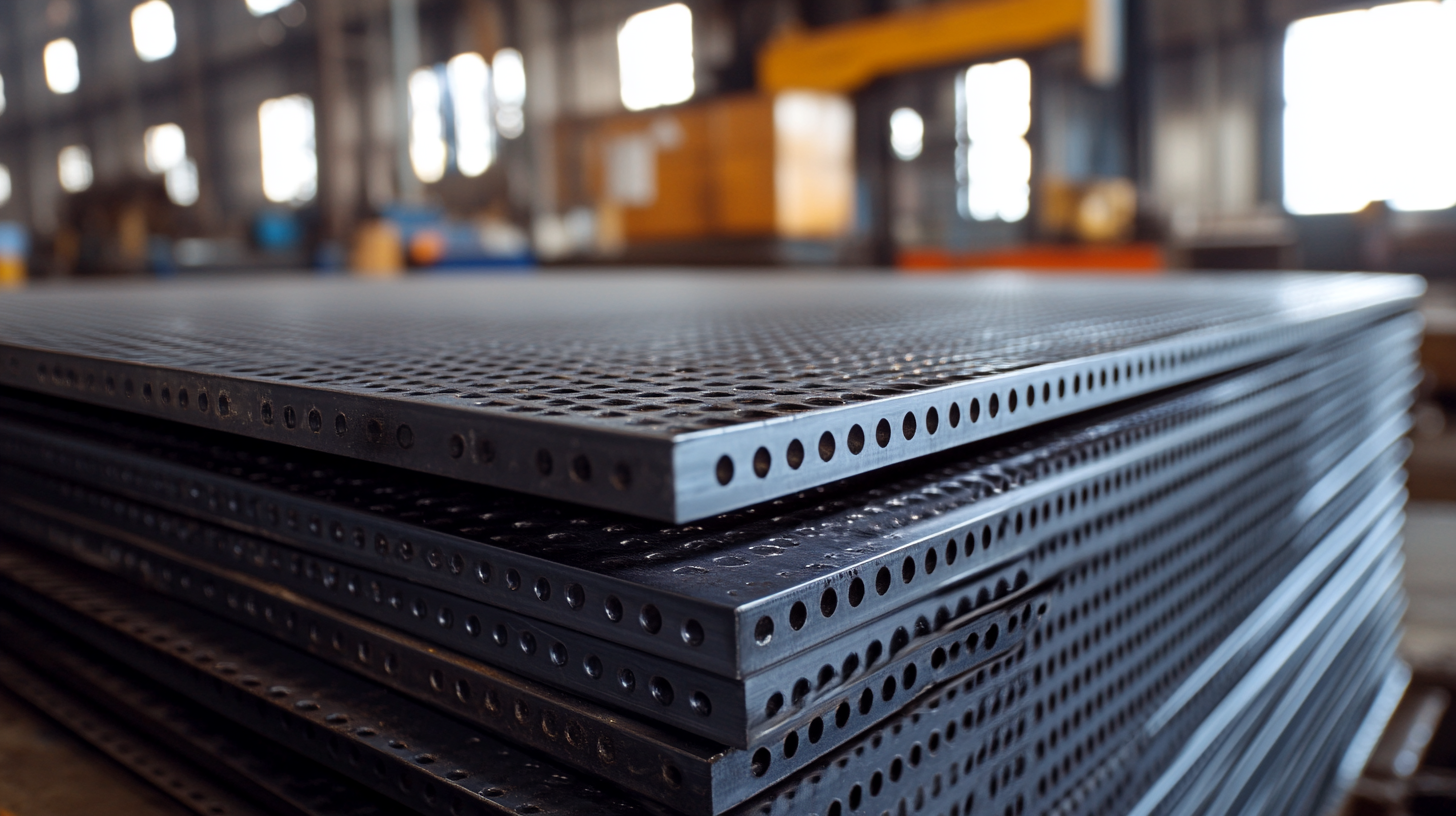As we approach 2025, the demand for perforated metal sheets continues to gain traction across various industries, underscoring their versatility and functionality. These sheets, characterized by their array of holes, not only enhance aesthetic appeal but also serve critical purposes in applications ranging from architecture to manufacturing. The global market for perforated metal sheets is witnessing significant changes driven by technological advancements, sustainability trends, and evolving consumer preferences. This blog aims to delve into the current trends shaping the market and the myriad opportunities that lie ahead.
In examining the trajectory of perforated metal sheets, we will explore key factors influencing market growth, including innovative designs, material advancements, and increased use in eco-friendly applications. As industries continue to prioritize sustainability and efficiency, the role of perforated metal sheets is set to expand, presenting new avenues for businesses and investors alike. Join us as we provide insights into the global market landscape, highlighting trends that could redefine how perforated metal sheets are utilized in the near future.

The demand for perforated metal sheets is projected to rise significantly in 2025, driven by various key factors across several industries. One of the primary drivers is the increasing focus on sustainable construction practices. As builders and architects seek materials that are not only functional but also eco-friendly, perforated metal sheets present an ideal solution. Their ability to reduce weight while maintaining structural integrity allows for more efficient designs, which aligns perfectly with the industry's shift towards greener building materials. Another major factor contributing to the demand for perforated metal sheets is their versatility in application. From architectural facades to industrial filtration systems, the sheet’s aesthetic appeal and functional benefits make it a popular choice among designers and engineers. For instance, in the automotive sector, these sheets are utilized for lightweight components, which help enhance fuel efficiency and performance. Similarly, in the HVAC industry, they are essential for ventilation systems, providing both noise reduction and air flow optimization. Furthermore, the rise of smart cities and urbanization is expected to further bolster the market for perforated metal sheets. As cities expand and incorporate more advanced infrastructure, the need for innovative materials that can effectively manage air flow, light, and structural design becomes critical. This trend opens new avenues for the perforated metal sheet market, creating opportunities for manufacturers to cater to evolving consumer needs and technological advancements.

Perforated metal sheets are on the verge of a significant evolution, with emerging applications and innovations set to reshape various industries by 2025. The global market for these materials is expected to witness a strong growth trajectory, estimated to reach approximately $3.5 billion by 2025, fueled by advancements in manufacturing techniques and the rising demand for lightweight and durable materials across sectors such as construction, automotive, and aerospace.
One particularly exciting development is the integration of perforated designs with graphene. This innovative approach enhances graphene's already impressive properties, leading to enhanced efficiency in applications ranging from electronics to energy storage. The porous structure allows for greater surface area, improving the material's responsiveness and performance in various environments. Industry experts suggest that this combination could lead to breakthroughs in sensor technology and high-capacity batteries, marking a new era for smart materials.
As more industries capitalize on the unique characteristics of perforated metal sheets, we are likely to see a surge in customized solutions tailored to specific needs. The flexibility of these materials permits intricate designs that not only meet functional requirements but also provide aesthetic appeal. This trend toward personalization is particularly relevant in architectural applications, where designers are increasingly utilizing perforated metals to create visually striking facades that also serve practical purposes such as ventilation and sunlight control.
The future of perforated metal sheets is not just a continuation of existing uses but a significant leap towards innovative designs and applications that align with the demands of modern technology and sustainability goals. As industries embrace these innovations, the potential for growth and transformation remains vast.

The global market for perforated metal sheets is poised for significant growth in the coming years, driven by expanding applications across various industries such as construction, automotive, and aerospace. According to recent analyses, key regions are emerging as growth hotspots. Notably, the Asia-Pacific region shows promising potential, with a projected CAGR of over 10% through 2025, fueled by rapid industrialization and urbanization efforts. These dynamics create favorable conditions for manufacturers and suppliers involved in the production of perforated metal sheets.
In North America, the market is also expected to experience steady growth, attributed to the robust demand from architectural applications and the increasing adoption of sustainable building practices. With the North American market projected to reach a valuation exceeding USD 1.5 billion by 2025, businesses can capitalize on the surging interest in eco-friendly materials and designs. Furthermore, Europe remains a key player in the perforated metal sheets market, supported by stringent regulations promoting energy efficiency and resource conservation, leading to increased utilization across various sectors.
As the industry matures, companies should focus on innovation and product development to cater to specific regional needs, enhancing their competitive edge. Collaborations and partnerships within the supply chain will also play a crucial role in meeting the growing demand and unlocking new opportunities in the global market for perforated metal sheets.

Sustainability trends are significantly reshaping the production landscape of perforated metal sheets as we approach 2025. As industries increasingly prioritize eco-friendly practices, manufacturers are exploring materials and processes that minimize environmental impact. The transition towards bio-based materials reflects a broader commitment to sustainable manufacturing principles. Recent advancements in bio-based coatings, for instance, highlight a growing interest in replacing traditional polymers with more environmentally-friendly alternatives in various applications, including packaging.
In the context of perforated metal sheets, integrating sustainable practices means not only using greener materials but also optimizing production methods. Smart manufacturing technologies are emerging as critical enablers in this evolution, allowing for greater efficiency and waste reduction. With Industry 4.0 on the horizon, manufacturers are leveraging automation and data analytics to fine-tune their processes, ensuring they meet both sustainability goals and market demands.
Moreover, architectural trends are also influencing the evolution of perforated metal sheets. The combination of aesthetic appeal and functionality is driving the design of facade solutions that incorporate perforated metal elements. This trend aligns perfectly with the sustainability narrative, as architects seek materials that not only provide visual interest but also enhance energy efficiency and reduce resource consumption. As we look towards 2025, the intersection of sustainability and design innovation will continue to present exciting opportunities for the perforated metal sheet market.
The competitive landscape for perforated metal sheets is undergoing significant transformation as various key players adopt innovative strategies to capitalize on emerging market trends. The projected growth from $2.536 million in 2025 to $5.681 million by 2032 presents lucrative opportunities for companies involved in the production and supply of perforated metal sheets. Major players are increasingly focusing on enhancing their product offerings and diversifying their applications across various industries, such as construction, automotive, and electronics, to meet growing consumer demands driven by sustainability and aesthetic appeal.
Moreover, strategic partnerships and collaborations among manufacturers are becoming more prevalent, enabling firms to leverage each other's strengths and expand their market presence. Companies are investing in advanced technologies and sustainable practices to improve efficiency and reduce environmental impact. As perforated metal sheets find increasing applications in filtration, acoustics, and decorative elements, market players must stay ahead by continuously innovating and adapting to changing industry standards. This dynamic environment not only fosters competition but also encourages investment in research and development, ensuring that stakeholders remain relevant in a rapidly evolving market.
